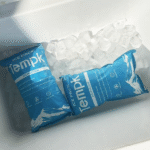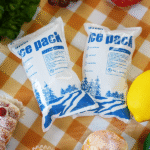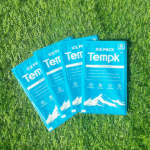How to Use Dry Ice Cooler Packs & Pack Sheets for Cold Chain Shipping?
Shipping perishable goods requires effective temperature control. In 2025, dry ice cooler packs and pack sheets have become vital tools for ensuring goods remain at optimal temperatures during transport. These tools, used in pharmaceuticals, seafood, and other temperature-sensitive industries, offer reliable cooling, flexibility, and cost savings. In this guide, you will learn how to choose the right dry ice product, calculate sizes, follow safety regulations, and stay updated with industry trends.

-
What are dry ice cooler packs and dry ice pack sheets, and how do they work?
-
How do you size and use dry ice pack sheets correctly?
-
What are the safety and compliance rules for 2025?
-
How much do dry ice pack sheets cost, and how can you find the best deals?
-
What are the latest trends and innovations in dry ice cooling for 2025?
What Are Dry Ice Cooler Packs and Dry Ice Pack Sheets, and How Do They Work?
Dry ice cooler packs and pack sheets are specialized solutions designed to maintain low temperatures in transit. Dry ice cooler packs are pre-packaged units filled with solid carbon dioxide, which sublimates into gas at temperatures as low as -78.5°C (-109.3°F). This sublimation process absorbs heat and helps keep items frozen. Dry ice pack sheets are flexible, polymer-based sheets that are filled with dry ice, offering a lightweight solution for smaller or more flexible shipments.
Both of these cooling agents are ideal for shipping sensitive items that need constant cooling, such as vaccines, seafood, or pharmaceuticals. By understanding how they work, businesses can improve shipping efficiency and reduce the risk of spoilage during transport.
How Dry Ice Cooler Packs and Pack Sheets Maintain Temperature During Transit
Dry ice maintains sub-zero temperatures by absorbing heat from its surroundings as it sublimates into carbon dioxide gas. This process helps cool the air inside the shipping container, ensuring that products remain at a controlled temperature. For longer shipments, dry ice packs are often used, as they can maintain their cooling effect for up to 48 hours, depending on the quantity used and external temperature conditions. On the other hand, dry ice pack sheets are better suited for shorter trips, providing an effective cooling solution for 12 to 24 hours.
Temperature Control Methods in Cold Chain Shipping
| Temperature Control Method | Timeframe | Effectiveness | Application |
|---|---|---|---|
| Dry Ice Packs | 24-48 hours | High | Ideal for long-distance shipments requiring freezing temperatures |
| Dry Ice Pack Sheets | 12-24 hours | Moderate | Perfect for short shipments or less temperature-sensitive goods |
| Gel Packs | Varies | Moderate | Suitable for smaller shipments or goods that do not require freezing |
Dry Ice in Action: Real-Life Applications
-
Pharmaceutical Scenario: A pharmaceutical company shipping vaccines can rely on dry ice packs to ensure that the cold chain is never broken, preventing spoilage and degradation of sensitive medical products.
-
Seafood Distributor: A seafood distributor using dry ice pack sheets can maintain the quality of fresh fish during an overnight shipment, ensuring products are frozen until delivery, thus avoiding spoilage.
Real-Life Case: A Seattle-based seafood distributor experienced a 20% increase in customer satisfaction after transitioning to dry ice cooler packs, reducing returns caused by temperature-related spoilage.
What Are the Benefits of Using Dry Ice in Cold Chain Shipping?
Using dry ice for cold chain logistics offers numerous advantages:
1. Extended Shipping Durations
Dry ice’s extreme cold (-78.5°C / -109.3°F) ensures that products remain frozen for long durations, making it ideal for items like seafood, pharmaceuticals, and medical samples that need to stay below freezing temperatures during extended shipments.
2. Non-Toxic and Safe for Use
Dry ice is a non-toxic refrigerant, ensuring it is safe for use across various industries, including food and pharmaceuticals. It is also environmentally friendly, as it sublimates into gas, leaving no waste behind.
3. Cost-Effective
By reducing spoilage-related losses, dry ice can significantly lower overall shipping costs. In addition, reusable dry ice packs and sheets can further reduce expenses over time.
| Advantages | Description | Practical Applications |
|---|---|---|
| Extended Shelf Life | Maintains freezing temperatures, preserving quality | Ideal for perishable foods and pharmaceutical products |
| Non-Toxic & Safe | Safe for shipping temperature-sensitive products | Perfect for pharmaceuticals and food industries |
| Cost-Effective | Reduces spoilage and product waste | Lowers overall shipping costs |
Safety and Compliance in 2025 for Dry Ice Shipping
Dry ice shipping comes with specific regulations to ensure safety. For instance, the IATA PI 954 guidelines set weight limits for dry ice in air cargo and outline the necessary venting and labeling requirements. These include ensuring that dry ice packages are properly labeled with “Dry Ice” or “Carbon Dioxide, Solid” and the corresponding UN1845 code.
Key Compliance and Handling Guidelines
-
Proper Venting: Never seal dry ice in an airtight container to prevent pressure buildup. Ensure proper ventilation for all dry ice shipments.
-
Handling with Care: Always wear insulated gloves and eye protection when handling dry ice to prevent frostbite and exposure to carbon dioxide gas.
-
Weight and Labeling: Adhere to weight restrictions and labeling requirements, particularly for air transport, where dry ice quantities are strictly regulated.
2025 Trends and Developments in Dry Ice Cooling for Cold Chain Logistics
The cold chain logistics industry is evolving rapidly. By 2025, sustainability, innovation, and technological advancements are set to redefine how businesses manage their shipping operations.
Sustainable Dry Ice Production
Sustainability is becoming a central focus for the cold chain industry. The production of dry ice is becoming more sustainable, with efforts to reduce energy consumption and carbon emissions. Companies are also exploring bio-based CO2 sources, which further reduce the environmental impact of dry ice production.
Smart Packaging and IoT Monitoring
Advancements in smart packaging are allowing real-time monitoring of temperature-sensitive shipments, ensuring that products are always kept within the required conditions. The integration of IoT technology into cold chain systems enhances operational transparency and reliability, giving businesses more control over the shipping process.
FAQ
Q: How long can dry ice keep items frozen?
A: Dry ice can typically maintain frozen temperatures for up to 48 hours, depending on the amount of dry ice used, the insulation, and environmental conditions.
Q: Is dry ice safe to use for shipping food?
A: Yes, dry ice is safe for food shipping as long as proper handling, packaging, and ventilation procedures are followed.
Q: Can dry ice be reused?
A: Many dry ice packs and sheets are designed for multiple uses, offering a cost-effective solution for recurring shipments.
Conclusion
Dry ice cooler packs and pack sheets are indispensable in ensuring the safe and efficient transport of temperature-sensitive goods. Whether you’re shipping food, pharmaceuticals, or medical samples, these tools offer reliability, cost savings, and compliance with industry regulations. By choosing the right dry ice solution and following best practices, businesses can enhance their cold chain logistics and improve customer satisfaction.
Next Steps
-
Evaluate Your Shipping Needs: Determine whether dry ice packs or sheets are most suitable for your shipment based on duration and temperature requirements.
-
Consider Sustainable Options: Explore reusable dry ice options and eco-friendly packaging to further reduce your environmental impact.
-
Train Your Team: Ensure that your team is fully trained in the safe handling and packaging of dry ice, including compliance with all safety regulations.
About Tempk
At Tempk, we specialize in providing innovative cold chain solutions tailored to your specific shipping needs. Our products, including dry ice cooler packs, are designed to ensure the safe and efficient transport of perishable goods. Let us help you optimize your cold chain operations and reduce costs.
For professional advice on improving your cold chain logistics, contact us today!























